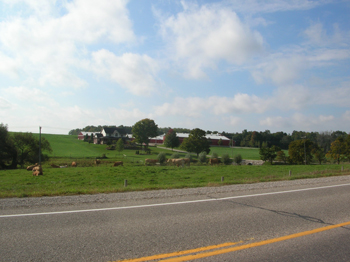Five Teenagers in One Ontario Community Died by Suicide During Four Months in 2016--Parents, Friends and Mental Health Advocates Ask Why and Search for Preventative Measures
My search in the press for answers to questions about these suicides
Mike McMahon, executive director of the Canadian Mental Health Association branch in Oxford County, called the five deaths a "crisis." He said: "For the people that are feeling unwell, there is a sense of hopelessness. Our youth, for a reason that hasn't been properly explored, are looking at suicide as a viable alternative to the pain and sadness that they're feeling." He believes that as the number of suicides rise, the anxieties of people in the community increase; that those people contemplating suicide feel more and more hopeless. "We have to get at the sadness. We have to begin to train youth and adults to talk about suicide...to make sure that youth have conversations about how they are feeling with each other." He believes that these conversations will help prevent suicide and help young people handle mental health problems. The agency has posted a 24-7 crisis line where people can phone for help. Pictures of mental health workers and the phone number of the crisis line are posted around town. (1)
Mackenzie Gail, age 16, staged a walkout of students to protest their belief that students are not consulted about the needs of youth, and that presently mental health services deal chiefly with adult issues. Students want more full-time support workers for young people. She said, "I do believe it has a lot to do with bullying, for sure, and not enough awareness and help in the school system." Students stood on the back of a pick-up truck to tell their stories. Ron Bailey, a father, joined them to talk about Mandy, his loving daughter, who tried to act like a normal teenager, but suffered depression and did not have the tools to manage her conflicts even though she was getting treatment. He bemoaned his loss saying that he and his wife did not recognize that the crisis had come. Families need help too. (2a) (3) (4)
Gail Bradfield-Evraire, a mother, started a Facebook page, "Youth Suicide Prevention in Woodstock," an outlet for youth to talk to their friends. More than 3,000 members joined in one day. (1) "Youth and parents would like to see mental health added to the school curriculum. Others ask for more mental health beds in the local hospital to treat youth." (1) (3)
A visit to the Woodstock community
I wondered if Woodstock was very different from the farming communities that I have known, so I decided to make the 142 km, two-hour drive south-west from Toronto to visit the small city of 38,000 inhabitants. Most Canadian cities grew because of their geographic locations near lake or river ports or near timber or mining opportunities. Woodstock grew because it is a land route situated on the beeline between Quebec City and Michigan, U.S.A. In pre-confederation days it was on the stage-coach route to central North America. Today it is a communication hub on this corridor. Via Rail makes a stop in Woodstock. Industries like General Motors have their main distribution centres there, Toyota has an assembly plant, and other automotive industries have chosen this site. The rich soil in the area favoured farming enterprises. Woodstock is known as "The Dairy and Cheese Centre of Canada." Pet food industries and forestry industries prosper. The early settlers were United Empire Loyalists, folks who did not want to separate from Great Britain during the American War of Independence. In fact, when the war ended, British soldiers were given tracts of land and many were promoted to seats in the legislature if they promised to stay.
I picked up route 403 to bypass the city of Hamilton. A sign told me that I was 70 km from Woodstock. On both sides of the road waist-high blades of mature grass and an occasional patch of purple asters swayed in the October breeze. The land is flat. I could see for miles unless my vision was obstructed by a stand of mixed deciduous and evergreen trees. Most of the adjacent fields were filled with wilted corn stocks or the brown stubble left when hay was gathered. Now and then I saw a bright green field that must be spring wheat already three or four centimeters high. I noticed more and more farms with two or three silos towering high over large barns, and I looked for the cattle that would feed on hay and silage throughout the winter. I remember silo-filling time at my uncle's farm in Ohio when all the neighbourhood men took turns helping each other cut the green corn stocks, haul them on a wagon pulled by horses or a tractor to the site where a contraption ground up the stocks and carried the mulch-like feed up a rotating belt to the top of the silo where the silage spilled into the depth. I wonder if farmers now are so automated that they don't need to help each other. This is dairy country, and I am almost at my destination.

Typical farm with cows in Oxford county Ontario, Canada
Some issues that precipitate suicide
My mind drifted to some facts I knew about the issues that lead to suicide. First Nations youth in Canada have the highest incidence of suicide. The aboriginal youth are brought from their home reservations to live in group homes or hotels so that they can attend high school. Away from family, friends, and customs these teenagers are lonely and have a hard time. Paul Martin, former Canadian Prime Minister, said that the Canadian Federal Government needs to build good schools and improve health care on the reservations so that the youth don't need to leave their communities. Too often we read about suicides and disappearing young girls who have been sexually molested in the cities. (1) (5) The present Canadian Government has made it a priority to address the many needs of aboriginal people.
I also remember Adam White's voice on the Huffington Post video talking about his brother's suicide. He thought he knew what Trevor was going through because he too is gay. He was astonished when he heard their neighbours saying that gay people have "unnatural" feelings and should repent before God and change their ways. But he didn't feel that he and his brother were bad nor were they unkind and unloving. Adam hoped that when Trevor went to university, things would be better, but even Trevor's roommate belittled and badgered him. Adam said that it makes you feel that you don't belong. There is no community where you can feel accepted. It's lonely, life has no purpose, and finally you feel that you can't take the hurt any longer. (5)
Ashleigh-Rae Thomas wrote a blog for the Huffington Post describing depression. She said she feels that she is flawed, but she can't find a way to change her attitudes or ways. "If I weren't such a bad person then I would feel better," she wrote. (6)
I, too, remember going for help when I was depressed. The therapist reminded me of my accomplishments and dreams, and during the session I felt better. But after I left his office, I reasoned that my accomplishments didn't really count, and the hopeless feelings returned. I felt that I needed to change, but I didn't know how, nor did I know what I wanted to become. I was fixed in my old ways. Life was miserable. Though I didn't plan suicide, I awoke every morning hoping that this would be my last day on earth. I just went through the hours like a robot, smiling, pretending, and meeting the demands of the day. It took time and talking until I became tired of those depressing feelings and decided that I had to get busy and work on new dreams. My friends hadn't realized how low I felt. One needs friends who accept you as you are.
Mark Henick tells us what it is like to go to the brink of suicide in his TED talk. He is a handsome fellow and looks so normal, but that was not how he felt. He perceived himself as not being good enough, not smart enough. He describes his suicide attempt when he was saved by a stranger just as he was about to jump off a bridge. He tells us that 90% of conditions leading to suicide are treatable. The troubled person needs to take charge, to have a different conversation with themselves. They need to talk themselves into ways of applying their talents and experiences to make their life meaningful. Experience teaches us that we can live through the bad times, that we have the tools and patience to work toward better times. (5a)
| | 1 | 2 | 3 | |



 Marlene Ritchie
Marlene Ritchie










